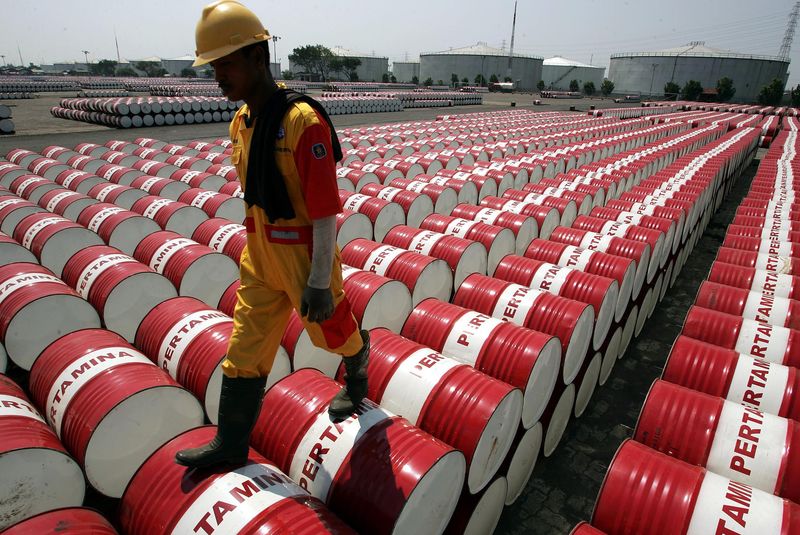Investing.com – In a knee-jerk reaction, West Texas Intermediate oil futures pared losses in North American trade on Wednesday, after data showed that oil supplies in the U.S. registered an inventory draw that was twice as big as expected.
However, investors appeared to change their minds as they digested the data and crude prices hit intraday lows in what may have disappointment at the large build at the key U.S. delivery point as well as larger-than-expected increases in both gasoline and distillate stockpiles.
Crude oil for January delivery on the New York Mercantile Exchange fell 93 cents, or 1.83%, to trade at $50.00 a barrel by 10:49AM ET (15:49GMT) compared to $50.37 ahead of the report. West Texas Intermediate oil hit an intraday low of $49.84 after the release.
The U.S. Energy Information Administration said in its weekly report that crude oil inventories fell by 2.389 million barrels in the week ended December 2. Market analysts' expected a crude-stock draw of 1.032 million barrels, while the American Petroleum Institute late Tuesday reported a supply draw of 2.21 million barrels.
Supplies at Cushing, Oklahoma, the key delivery point for Nymex crude, rose by 3.783 million barrels last week, the EIA said. Total U.S. crude oil inventories stood at 485.8 million barrels as of last week, according to press release, which the EIA considered to be “at (the) upper limit of the average range for this time of year”.
The report also showed that gasoline inventories increased by 3.425 million barrels, compared to expectations for a build of 1.948 million barrels, while distillate stockpiles grew by 2.501 million barrels, compared to forecasts for a gain of 1.840 million.
Elsewhere, on the ICE Futures Exchange in London, Brent oil for February delivery lost 76 cents, or 1.41%, to $53.17 by 10:50AM ET (15:50GMT), compared to $53.55 before the release.
Investors are turning their attention towards a meeting of OPEC and non-OPEC members in Vienna on December 10 to finalize the details of the agreement to cut production in order to help relieve the global supply glut and support prices.
Though OPEC members have reached an agreement to cut daily output by 1.2 million barrels and non-OPEC producers pledged another 600,000 barrel reduction, doubts have emerged over how effective the cuts will be at reducing massive oversupply that has pressured prices lower for more than two years.
Oil production has been outstripping consumption by between one to two million bpd since late 2014.
Furthermore, OPEC and Russia have reported that output hit record highs since the deal was announced, adding to fears that the global supply overhang could persist well into 2017.
Meanwhile, Brent's premium to the WTI crude contract stood at $3.17 a barrel by 10:51AM ET (15:51GMT), compared to a gap of $3.00 by close of trade on Tuesday.
